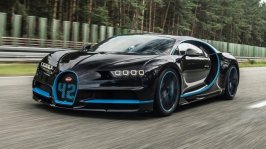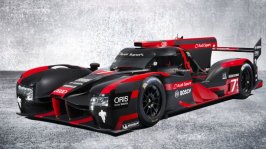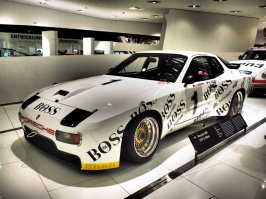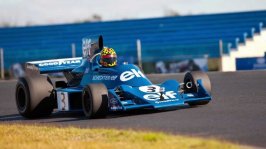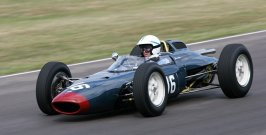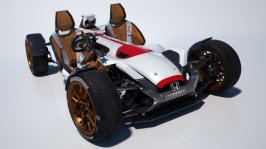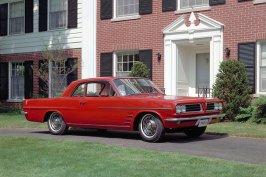And to prove that you can add two high-riser in a pack without necessarily making people go for their pitchforks...
The ENEOS Car Pack
Are you ready for some high-octane racing? Whether you want to kick up some dirt with the all new Ford M-Sport Fiesta ST rallycross car and Toyota Tundra TRD PRO truck, or experiences the thrills of the turbocharged F1 era in the Lotus 100T, or just go for a leisurely stroll in a beautiful vintage Siata (a brand that joins Forza's roster this month), the ENEOS car pack has you covered. We're also proud to give you a chance to drive the Alfa Romeo Stelvio Quadrifoglio and the Renault Megane R.S. Cup before they hit the showroom. Finally, a NASCAR legend closes off this month's selection, in the form of the Ford Torino Talladega, the car that started the short-lived "aero car" era.
The ENEOS Car Pack is included as part of the Forza Motorsport 7 Car Pass, which is available for separate purchase or as part of the Forza Motorsport 7 Ultimate Edition.
Here’s what awaits you in this month's pack:
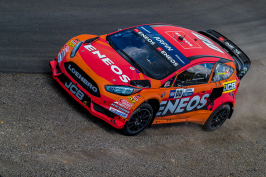 2017 Ford #00 Loenbro ENEOS Racing M-Sport Fiesta ST - Forza Group Rally
2017 Ford #00 Loenbro ENEOS Racing M-Sport Fiesta ST - Forza Group Rally
Since the resurgence of the discipline earlier in the decade, the Fiesta ST's been an ubiquitous staple of Rallycross. This is not without reason: built by M-Sport (the same guys in charge of Ford's WRC program), it combines a 2-litre Ecoboost engine with a power output of 600 horsepower, four-wheel drive and light weight to sprint from 0 to 60 in less than two seconds, reaching the ever-so-important first corner quicker than the competition and darting through the tortuous detour of the "joker lap" the Red Bull Global Rally Cross Series mandates on all drivers. This specific car was driven in the 2017 season by Steve Arpin, racing for Loenbro Racing: against a field packed with talent, he collected five podiums and two wins, placing third in the final standings behind three-time champion and ex-F1 driver Scott Speed, and sports legend Tanner Foust.
Hint: Sometimes, you just have to shove them you're the boss!
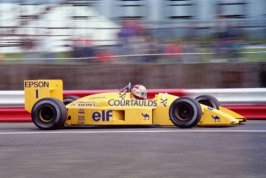 1988 Lotus 100T - Formula 90s
1988 Lotus 100T - Formula 90s
1988 was a transformative year for the Lotus F1 team. Ayrton Senna left Hethel after three seasons to move to McLaren - a move that would prove very successful for him, but that left the team without its best talent. His replacement, however, was no less than reigning World Champion Nelson Piquet, and with Honda supplying Lotus with the same engine as McLaren, it seemed like the team was going to be one of the dominant forces that season. It wasn't: Piquet could only muster three third-place finishes and no wins, and second driver Satoru Nakajima, on his second season with the team, failed to impress and brought home only one point through the whole season. The car had its fair share of problems: while the engine was powerful, and relatively reliable, the chassis lacked the torsional stiffness and the suspension, a technological step back from the 1987 adaptive suspension setup, was unrefined and hard to adjust to the different tracks and surfaces. This resulted in a temperamental car that was, at times, difficult to control. It'd be the last year of Lotus as a top tier competitor: the double failure to qualify for the 1989 Belgian Grand Prix is pointed at by many as the beginning of the team's descending spiral. Still, the 100T is by no means a slouch: it will be up to you to prove its performance against its McLaren rival.
Hint: According to some, it hasn't gone down as one of the greatest cars in the history of motorsports...

2018 Alfa Romeo Stelvio Quadrifoglio - Modern SUV
Alfa Romeo has flirted with the concept of building a taller vehicle since 1951, when the "Matta" (essentially, a Jeep Willys powered by the 1900cc "Bialbero" twin-cam engine) was proposed to the Italian armed forces. In more recent times, the Kamal concept was presented in 2003 to test the water for a possible SUV with the traditional triangle grill. But the Stelvio, which takes its name from Italy's most famous mountain pass, is the brand's first offering in this particular sector of the market. Not unlike the Giulia, it shares its underpinnings with a model in the Maserati range, and the Quadrifoglio we have here features the same turbocharged vee-6 of the top-of-the-line variant's of Alfa's breakthrough sedan. All of this results in a resoundingly fast vehicle, that managed to turn a lap of the infamous Northern Loop of the Nurburgring in less than eight minutes - but why take our words for it? Go on, lay some rubber in this beauty!
Hint: Sometimes GOAT means "greatest of all times"... And sometimes you just get the name because you can climb steep inclines.
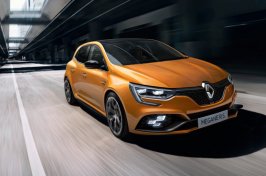 2018 Renault Megane R.S. Cup - Modern Hot Hatch
2018 Renault Megane R.S. Cup - Modern Hot Hatch
Amongst fans of high-performance hot hatches, Renault Sport is a household name. They're known to make some of the most track-focused cars based on Renault's popular models; the 2018 Megane R.S. is not an exception, but rather a confirmation of the rule. The 1.8 litre four-pot turbocharged engine, shared with the new Alpine sportscar, produces 280 horsepower, which may seem like a modest increase over the past model's 275, but is still a lot for a car like this. The power can be sent to the front wheels either through a manual or a double-clutch sequential gearbox, and the new 4control system allows all four wheels of the car to steer. The package is finished by an aggressive bodykit which is both stylish and functional, designed to maximize downforce and minimize drag.
Hint: Not many cars feature four steering wheels. This is one of them.
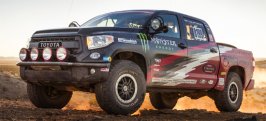 2015 Toyota #8199 TRD Tundra Pro Desert Truck - Forza Trophy Trucks
2015 Toyota #8199 TRD Tundra Pro Desert Truck - Forza Trophy Trucks
Can you take a vehicle straight from the showroom floor and race it in the SCORE Baja 1000 - known to be one of the most demanding, grueling, harsh races in the discipline of desert raiding? Well, Toyota Racing Division (TRD), responsible for the brand's many successful motorsport ventures, certainly seemed to think so. When this Tundra Pro showed up at the starting line of the 2014 showing of the famous desert race, the most noticeable modifications were the offroad-specific tires, mandatory rollcage and the massive projector lights replacing the mirrors: every other part of the car was left untouched. The objective was not, of course, to beat the purpose-built racing machines to the finish line: making it there was already a feat large enough to count as a win. One that was achieved when, 36 hours after leaving the stage, the Tundra crossed the line with just some battle scars to show. Way to go.
Hint: A desert's a desert, even if it has no snow in it.
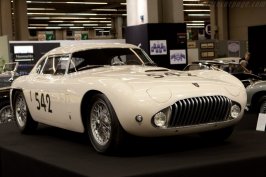 1952 SIATA 208 CS - Vintage Sport Coupe
1952 SIATA 208 CS - Vintage Sport Coupe
SIATA (Società Italiana Applicazioni Tecniche Auto-Aviatorie) was born in 1926 as a manufacturer of aftermarket parts for Fiat cars. After the end of the Second World War, it begun building its own sportscars, based on Fiat components; the Daina Grand Sport, powered by a four cylinder, 1.4 litre engine, was particularly successful, with one exemplar placing on the podium of the 1954 Sebring 12 hours race. When Fiat's ambitious program to build their own sportscar was met with an early demise, the small company managed to get their hands on a limited supply of the high-revving 2 litre vee-8 engines that were supposed to propel it; the 208 was designed to capitalize on the occasion, but its high retail price at the time limited its success in the American market to which it was tailored. The numbers are a bit opaque, but less than 50 were built, and of these, less than half of that featured this elegant coupe body penned by the legendary designer Giovanni Michelotti, and built by Stabilimenti Farina. Hidden pop-up headlights, which would go on to become an ubiquitous feature of vehicles with sporty ambitions in the 1980s, were back then its most distinguishing feature.
Hint: It had a V8 and pop-up headlights before the Corvette made it cool.
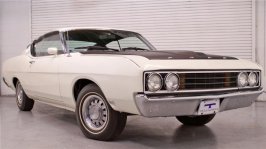 1969 Ford Torino Talladega - Historic Road Racing
1969 Ford Torino Talladega - Historic Road Racing
This is a car built for speed. In 1969, the war between Ford and Chrysler for stock car racing dominance was on, with engines growing in displacement and power output every year. It was then that the Dearborn's manufacturer pulled an ace from its sleeve: aerodynamics. The Torino Talladega featured a significantly redesigned bodywork, with a sleeker front section, a flush grille (as opposed to the then-popular inset grille) and various modifications to allow NASCAR teams to run their cars closer to the ground. On the production cars, the engine was the 428 Cobra Jet, rated at 335 horsepower. Ford built them at a significant financial loss, and only 740 left the showroom - a production number that is small enough to make it a veritable unicorn, but was still more than the 500 needed for homologation purposes.
Hint: Built at a loss, and in exceedingly large numbers.




































